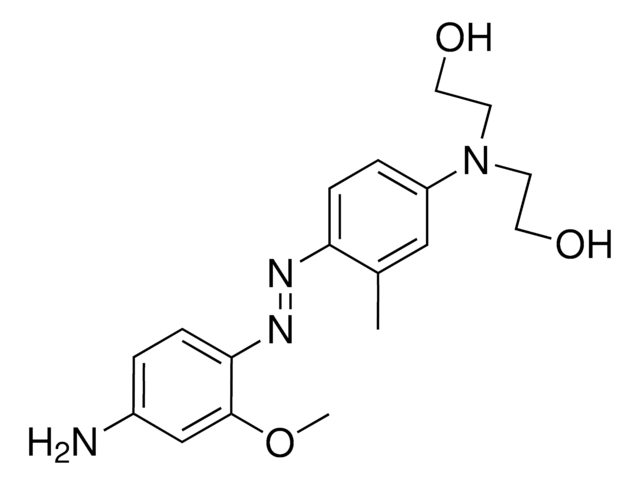215740
Disperse Red 1
Dye content 50 %
Synonym(s):
N-Ethyl-N-(2-hydroxyethyl)-4-(4-nitrophenylazo)aniline
About This Item
Recommended Products
composition
Dye content, 50%
mp
160-162 °C (lit.)
λmax
503 nm
SMILES string
CCN(CCO)c1ccc(cc1)\N=N\c2ccc(cc2)[N+]([O-])=O
InChI
1S/C16H18N4O3/c1-2-19(11-12-21)15-7-3-13(4-8-15)17-18-14-5-9-16(10-6-14)20(22)23/h3-10,21H,2,11-12H2,1H3/b18-17+
InChI key
FOQABOMYTOFLPZ-ISLYRVAYSA-N
Looking for similar products? Visit Product Comparison Guide
Features and Benefits
replaced by
Signal Word
Warning
Hazard Statements
Precautionary Statements
Hazard Classifications
Skin Sens. 1
Storage Class Code
11 - Combustible Solids
WGK
WGK 3
Flash Point(F)
Not applicable
Flash Point(C)
Not applicable
Personal Protective Equipment
Choose from one of the most recent versions:
Certificates of Analysis (COA)
Don't see the Right Version?
If you require a particular version, you can look up a specific certificate by the Lot or Batch number.
Already Own This Product?
Find documentation for the products that you have recently purchased in the Document Library.
Our team of scientists has experience in all areas of research including Life Science, Material Science, Chemical Synthesis, Chromatography, Analytical and many others.
Contact Technical Service









